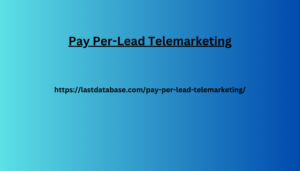Here’s a comprehensive LinkedIn lead generation strategy specifically tailored for the life science industry:
Optimize Your Profile: Craft a compelling headline and summary that clearly communicates your value proposition and target audience in the life science field. Showcase your expertise with relevant keywords and include links to your website or portfolio.
Join Industry Groups: Actively participate in relevant
LinkedIn groups where life science professionals connect and share knowledge. Engage in discussions, answer questions, and establish yourself as a thought leader.
Publish Valuable Content: Share insightful articles, industry reports, or original research relevant to the life science field. This positions you as a credible resource and attracts potential clients.
Targeted Lead Generation Techniques:
Advanced Search: Utilize LinkedIn’s advanced search functionalities to identify potential leads based on industry, job title (e.g., research scientist, pharmaceutical executive), company size, and location (focusing on life science hubs).
Connect and Build Relationships:
Connect with relevant decision-makers and influencers in the life science industry. Personalize your connection requests and follow-up messages to stand out. Engage with their content and provide valuable insights to build rapport.
Content Promotion and Lead Capture:
Share Company Updates: Regularly share updates about your company’s research, new product developments, or participation in industry events to stay top-of-mind with your network.
Lead Capture Forms: Utilize LinkedIn
Lead Gen Forms to streamline lead capture within the platform. Offer valuable downloadable content like white Pay Per-Lead Telemarketing papers, case studies, or industry reports in exchange for contact information.
Additional Strategies for Life Science:
Showcase Expertise: Highlight your team’s
qualifications, industry experience, and successful collaborations with life science companies on your profile do phone numbershave leading zeros and content.
Industry-Specific Content: Focus on content creation addressing challenges faced by life science professionals. This could be research findings, new technology applications in life sciences, or industry trends.
Partner with Influencers: Consider collaborating
with established life science influencers on LinkedIn to reach a wider audience and gain credibility.
Engage in Thought Leadership: Publish articles in industry publications or contribute to relevant online forums to establish yourself as a thought leader in your niche within the life science field.
Tracking and Optimization:
Monitor Your Results: Track key metrics
like profile views, connection requests, website clicks, and lead capture form submissions to measure your strategy’s effectiveness.
Refine Your Approach: Based on your data, analyze what’s working and adjust your content strategy, targeting criteria, or CTAs (Calls to Action) to optimize your lead generation efforts.
Remember: Building trust and establishing
yourself as a valuable resource is key to successful lead generation on LinkedIn, especially in the complex world of life science. Focus on providing valuable content, engaging authentically with potential clients, and nurturing relationships to convert them into qualified leads.
By combining these strategies
and tailoring them to your specific niche within life science, you can turn LinkedIn into a powerful lead generation engine for your business.



